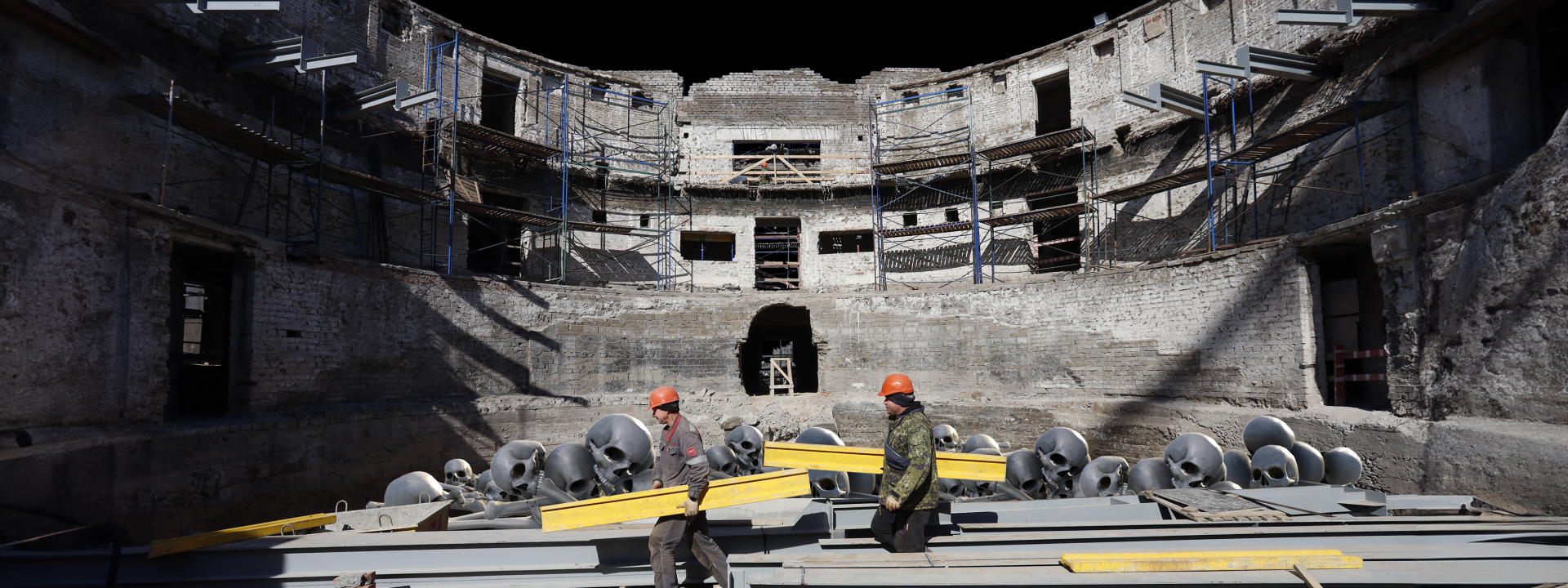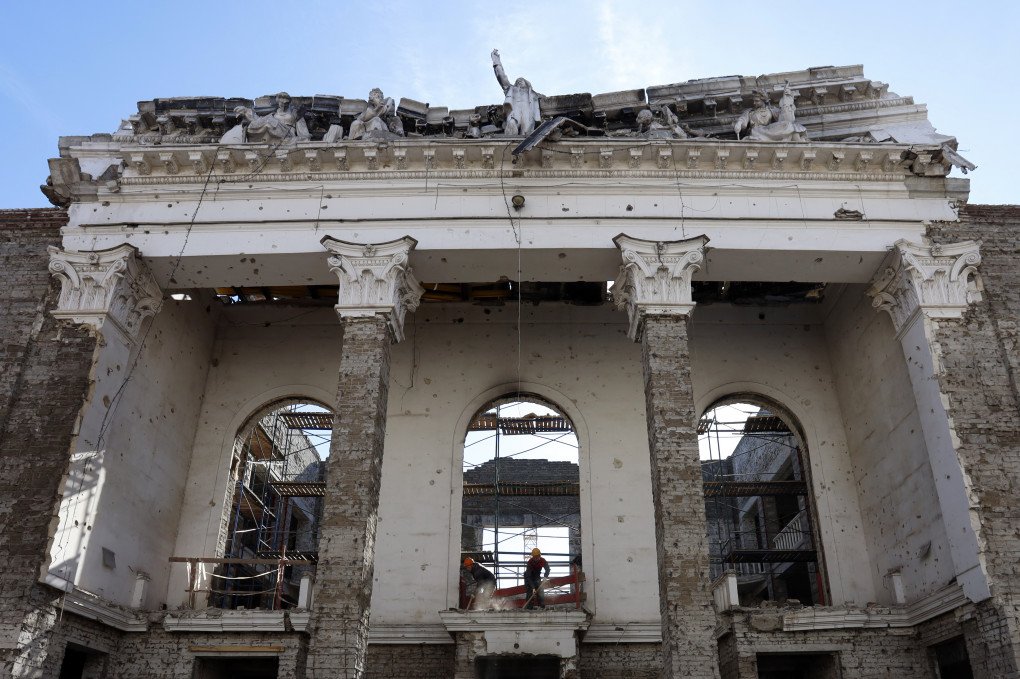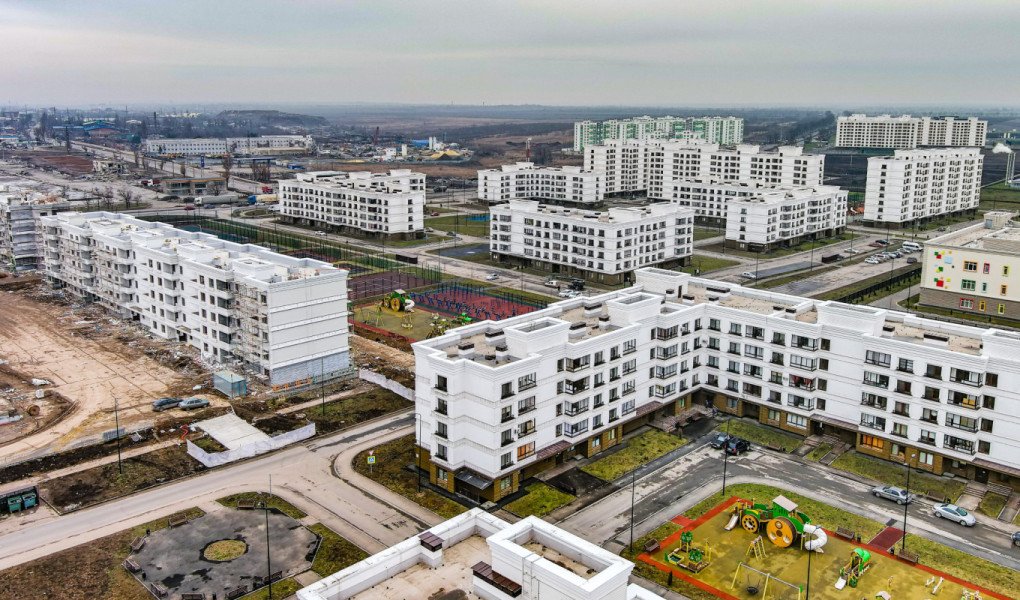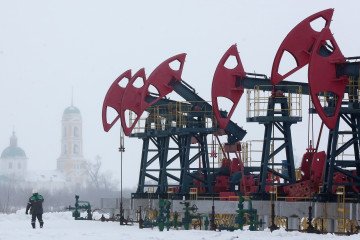- Category
- War in Ukraine
Russia Keeps Colonizing Occupied Ukrainian Territories. Its tool? Resettling Russians

Since 2014, Russians have flocked to occupied Crimea, replacing Ukrainians who left. The same thing is happening in Mariupol. It’s yet another Russian war crime quietly unfolding as international law prohibits the transfer of an occupying power’s civilian population into its occupied territory.
A couple of months ago, Maria* had a nervous breakdown when she understood she couldn’t come back to her native Mariupol—at least not until the city’s liberation.
“It’s not the same city anymore,” she said. “And there’s a lot of Russians now.” A simple glimpse at social media confirmed the city’s transformation, she said.
Occupational authorities didn’t wait for the corpses of civilians to get cold before bringing Russians into the open-air graveyard that Mariupol had become.
Maria’s Heartbreak: A City Transformed By Russia’s Occupation
Russia conquered Mariupol’s smoldering ruins in May 2023 in a shockingly brutal three-month siege, killing between 25,000, according to the advisor to the mayor of Mariupol, Petro Andriushchenko, and 100,000 people, according to Dmytro Zabavin, deputy of the Mariupol City Council.
It only took a few weeks to hear Russian spoken with a native accent in the martyr city.
“The first Russian supermarkets appeared only two weeks after the end of the siege,” Maria said. “And everything was already in Russian currency.”
As it always does in occupied territories, the Kremlin used a Soviet-old tactic of replacing the dead with Russians, attracting them with the promise of a better life by the Azov Sea—no matter how polluted.
Cynicism doesn’t stop there.
Alexey Smirnov, the acting governor of the Kursk region, said on August 13th that authorities would resettle refugees from Kursk Oblast, Russia, in the Russian-occupied territories in Zaporizhzhia Oblast amid the ongoing offensive.
Over 133,000 people have reportedly left, but how many will go south is unclear.
According to Smirnov, a Russian proxy leader in occupied Zaporizhzhia Oblast suggested "sanatoriums and boarding houses on the shores of the Azov Sea, located from Berdiansk to Kyrylivka."
“The use of this tactic in the occupied territories aims to destroy everything Ukrainian—language, culture, democracy,” said Valerii Novykov, the Head of the Luhansk Regional Human Rights Centre Alternative.
“Residents living under Ukrainian rule are used to democratic procedures, rallies, and protests, which pose a threat to Vladimir Putin's regime,” he said.
Russia seeks to achieve a state in which there will be no one left to resist by replacing the Ukrainian population with a Russian population in these territories.
The Kremlin also aims to create favorable conditions for future sham referendums, thanks to a docile majority.
How Russia Is Replacing Ukrainians With Its Own People
Forced demographic changes differ depending on the region.
Luhansk and Donetsk have been under occupation since 2014, which means Russia has already established legislation aping its own.
The integration process is just starting in cities like Mariupol, Berdyansk, and Melitopol—occupied after the full-scale invasion of Russia.
The primary demographics are people from poor regions of Russia, where the unemployment rate is high and infrastructure is non-existent.
Paul Gogo, a French journalist who managed to access occupied Mariupol to document life under occupation, confirmed the massive presence of labor migrants in the city, especially on construction sites.

“Yes, you can definitely see it, but my feeling is that they’re more here for missions, to get cash and head back or send it home,” he told United 24 Media.
Russia reportedly relocated 100,000 migrants from Central Asia as of November 2023, according to the National Resistance Center.
“At first, they come for temporary jobs, such as building roads or restoring houses, but eventually, they stay because the living conditions here are better,” said Novykov.
“They sent so many people from the east of Russia to work and rebuild Mariupol,” Maria confirmed.
Novykov added that the second category includes students who come to get higher education because studying and living here is cheaper than in Russia.
“Young people who come to study can stay here for permanent residence after completing their education, find a job, and so on,” Novykov explained.
Russia also actively attracts doctors and specialists, providing them with housing and other benefits to settle there.
Military personnel are the next in line, bringing their families to these territories or staying after their duty. Russia creates unique conditions to get its own into occupied territories.
For instance, military personnel participating in hostilities gradually transport their relatives to Luhansk, Donetsk, and other occupied cities, where they receive housing and stay permanently.
Last but not least, businessmen also flock there, taking over businesses to make easy money. Business is booming for the building industry since Russia decided to build a sea resort atop its war crimes.
“It's really a seaside resort being built,” Gogo confirmed. “They’re redoing the banks of the beach, pouring concrete, installing restaurants—it’s deeply cynical.”
“It’s a massive business,” he added. “It’s only people from St-Petersburg or Moscow who employ Chechen foremen or Central Asia migrants who do the lowest-pay jobs.”
How Russia Repeats Crimea’s Textbook
To understand how Russia’s forced migration policy works, there’s no better example than Crimea, home of at least 230,000 Crimean Tatars deported by Soviet dictator Josef Stalin in 1944.
Most died of starvation and disease in exile or during the horrendous travel to remote regions of Russia.
Stalin used the made-up excuse of their pseudo-collaboration with the Nazis at the time to justify the collective punishment even though the vast majority had served in the Red Army. In a twisted repeat of history, Putin regularly uses the same argument against Ukrainians to justify its atrocities.
At least 100,000 Ukrainians were forced to leave their homes due to regular persecution and repression by the occupying forces, the team of Tamila Tasheva, Ukraine’s Presidential Representative of Ukraine in Crimea, told United 24.
Roughly 800,000 Russians reportedly settled in the illegally annexed peninsula since 2014, according to the team.
800,000 Russians in Crimea, a region with a population of about 2.5 million people, means that more than 20% of its inhabitants have already been replaced.
This policy aims to change the population's demographic composition and strengthen control over the region and Russia's position in the international arena by justifying its referendum.
From the beginning of the occupation, the Kremlin immediately started importing Russians to show that the local population was waiting for the occupiers.
This tactic also reduced the share of ethnic Ukrainians alongside persecuted Crimean Tatars and prevented possible protests and attempts to return Crimea to Ukrainian control.
Russia applies the same textbook in Mariupol as in Crimea: preferential housing, work, and reward for the military.

Two plots of land and a house belonging to the father of famous Crimean Tatar singer Jamala were recently "nationalized," meaning confiscated by the occupier to turn it into a sanatorium for Russian troops.
Crimea has become a symbol of Russia's resettlement policy for several reasons.
First, the peninsula is strategically vital to Russia, with its naval base in Sevastopol, which is used as a rear for the Russian occupation forces.
Russia is trying to create the illusion of "historical justice," presenting the occupation as the "return" of Crimea to Russia, although the peninsula was for centuries before inhabited by Crimean Tatars.
The Russians’ resettlement helps to consolidate this thesis at the demographic level and create a new reality in which the majority of the population is pro-Russian.

A Family Torn Apart: Maria’s Fear of Returning Home
Putin’s policy to transfer Russians to occupied territories is a copy-paste of the USSR’s textbook, particularly Josef Stalin’s in Ukraine.
After the Holodomor, the 1932-1933 man-made famine that killed millions of Ukrainians resisting Stalin’s collectivization, Soviet authorities ordered massive resettlements in the empty villages.
Over 117,000 peasants from the USSR’s remote regions took over the farms where people had starved to death, according to Polish historian Robert Kusnierz.
Russians particularly repopulated the areas of Zaporizhzhia, Donetsk, and Luhansk at the time.
Settlement of occupied territories by Russians is part of Russia's genocidal policy towards the Ukrainian people, Novykov said.
Citizens of Russia are displacing Ukrainians from their lands, destroying Ukrainian culture, language, and traditions.
The ideal scenario for Russia is the complete replacement of the Ukrainian population with Russians, which will lead to the complete disappearance of Ukrainian identity in these territories.
For Maria’s family, the transformation has already started.
“Almost all my family is pro-Russians,” she said. “They don't talk about politics, and they’re kind of stressed that if I write how I hate Russians in our chat, someone from the FSB can read it and report them.”
“I don’t know if I’ll ever see them again,” Maria said.
*Maria’s name has been changed to protect her family’s identity against retaliation.

-6359eca46c72bde40a90abaaadd6eaa8.png)
-29a1a43aba23f9bb779a1ac8b98d2121.jpeg)


-206008aed5f329e86c52788e3e423f23.jpg)
